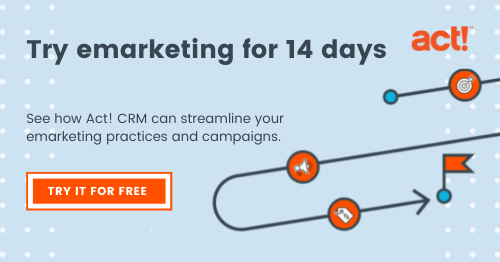
What is email confirmation (AKA “double opt-in”) and why is it considered a best practice of email marketing?
The idea is simple: Send one (and only one) email to your subscribers asking them to confirm their intent to receive your marketing email by clicking a confirmation link:
- Recipients that click to confirm can be sent the subscription email they’ve requested.
- Recipients that don’t confirm should not be sent any further marketing email.
This effectively gates your email marketing list so that it only includes subscribers that:
- Have correctly input their email address (no typos)
- Are real humans (no bots)
- Actually want to receive your marketing email (were not signed up by mistake, or by a person other than the owner of the address)
A best practice for good reason
“But what’s the harm in sending to unconfirmed addresses? Wouldn’t I be missing out on potential sales if I don’t follow up with these leads?”
This is a common misconception, and the inverse is actually true. Unconfirmed addresses have the potential to be spam traps and to generate spam complaints at a much higher rate than confirmed addresses. Spam traps and spam complaints will damage your sender reputation, which in turn reduces your email deliverability for all of your email campaigns, meaning you’ll be missing opportunities to engage with leads that are actually interested. By using email confirmation, you can verify that newly subscribed addresses are not spam traps, and that the recipients both want and expect your marketing email, which is critical to maintaining a pristine sender reputation. Like any best practice designed to protect your sender reputation, email confirmation helps you maximize deliverability for high priority leads that are verified and interested – the ones that are most likely to convert.
Email confirmation won’t completely protect you from spam traps, but it will at least limit the amount of damage incurred to your sender reputation by preventing high-risk addresses from receiving ongoing marketing. If you do get a spam trap address on your list, at least you’ll only send to it once. This limit also helps prevent your automated campaigns from being commandeered by nefarious bots as a means to overload another person’s inbox (AKA list bombing). When used in concert with other best practices like regular list hygiene and obtaining explicit permission, you can keep any reputation damage from spam traps, spam complaints and hard bounces to a negligible amount.
When to use email confirmation:
- After initial opt-in – Send a confirmation request as the first email in your campaigns or for any new subscriber.
- Improve quality of an existing list – If your current marketing list is generating spam complaints or spam trap hits, you can send a confirmation request to filter out the high risk addresses. Note that any spam complaints or spam trap hits from the confirmation email will still damage your sender reputation, so it’s best to perform other list hygiene steps first (e.g. remove unengaged contacts and those that have not provided explicit permission), especially if the symptoms are severe.
When not to use email confirmation:
To get initial permission – Email confirmation is not a substitute for obtaining explicit permission in the first place. Don’t send an email to get permission to send email, that’s just spam.
Quality over quantity
Opponents of using email confirmation often cite a couple of concerns: increasing barrier to entry and list shrink. These are real effects of using email confirmation, but I wouldn’t label them as negative ones. In fact, that’s exactly what we want to happen. Recipients who don’t click to confirm are actually spam traps, weren’t truly interested, or never provided permission in the first place. In any case, those are the kinds of addresses you don’t want on your list if you employ a quality over quantity approach. The alternative “see what sticks” method only works for spammers since deliverability to interested leads is a non-issue (they don’t have any).
So much of today’s marketing is about capturing attention and email confirmation provides an opportunity to engage immediately when the recipient is thinking about your business. You can even direct the recipient to a landing page for them to set email preferences, or supplement the confirmation landing page with priority content of your choosing. Remember that with email marketing, you’re starting a personalized relationship with your email recipient, not just shouting from a soap box – that’s what TV or radio advertisements are for.






